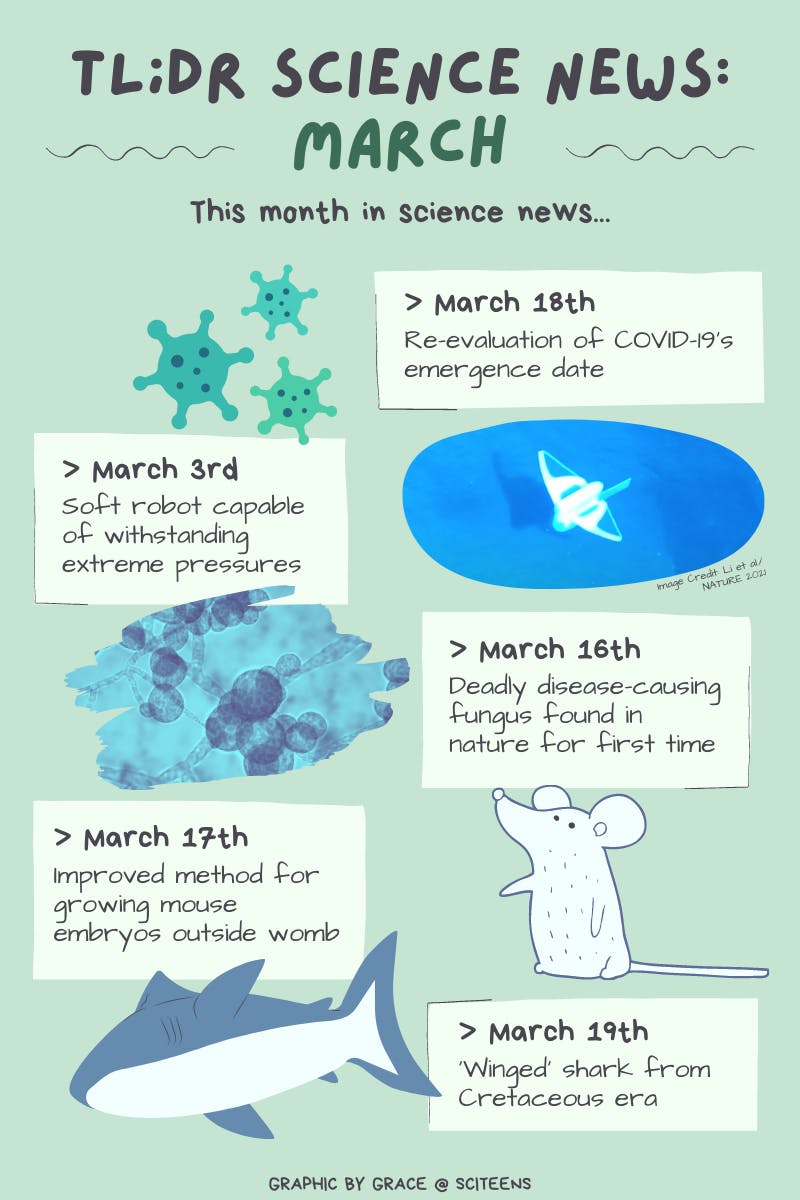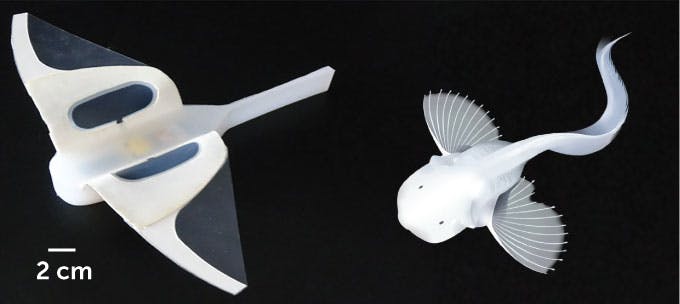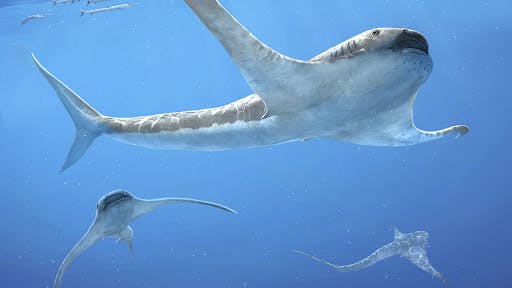SciTeens’ Ampere News: 5 Significant Breakthroughs From This March
By Grace Jiang
March 24, 2021 · 5 minute read
Today, we’re starting a new series: SciTeens’ Ampere News! At the end of each month, we will publish an article highlighting some interesting developments in the world of science over the last thirty(ish) days. For those curious as to why we named the series Ampere, the ampere is the standard unit of measurement of electrical current. Likewise, we hope that SciTeens will become the standard for keeping up with the most interesting and current news in STEM! The following infographic summarizes what we have in store for this month; feel free to scroll through and jump right to which story seems the most interesting to you!

1. Re-evaluation of COVID-19’s emergence date
What happened?
News of an emergent virus from Wuhan, the capital of Hubei province, China, had first struck the world in late-December 2019. However, in a recent study published on March 18th, researchers at the University of California San Diego School of Medicine dated the emergence of the SARS-CoV-2 (the virus that causes COVID-19) to as early as 2 months before the first described cases in Wuhan.
How did it happen?
Researchers found the mutation rate of the SARS-CoV-2 genetic information by analyzing 583-SARS CoV-2 genomes from December 2019 to April 2020. Using this mutation rate, they were able to estimate the points at which two or more SARS-CoV-2 variants diverged. To model when the first case of COVID-19 must have occurred, researchers used the points of divergence to approximate a time frame of existence of the common ancestor of all SARS-CoV-2 variants.
The results of the study “define the period between mid-October and mid-November 2019 as the plausible interval when the first case of SARS-CoV-2 emerged in Hubei province.”
Why does this matter?
COVID-19 was likely first identified quite a while after the virus had already emerged. Because the virus was not very prevalent even at the date of its discovery, it’s improbable that scientists could have detected it much earlier. This suggests that the current system is relatively weak for detecting viruses similar to SARS-CoV-2, something that perhaps could be improved upon to prevent future pandemics like COVID-19.
2. Soft robot capable of withstanding extreme pressures
What happened?
Scientists recently built a soft-bodied robot capable of withstanding pressures of up to 103 million pascals, “about the equivalent of an elephant standing on top of your thumb.” In a paper published on March 3rd, this robot was tested at the deepest part of the Mariana Trench, located at the bottom of the western Pacific Ocean.
How did it happen?
The structure of the robot was inspired by the anatomy of the Mariana hadal snailfish, as shown below.

The snailfish is overall quite...squishy. The bones in its skull are not completely fused together, and its body is filled with a watery goo. Modeling the robot after this squishy fish, scientists encased the electronics in the robot with soft silicone and designed a soft robot body.
Why does this matter?
Not much is known about the deepest parts of the ocean. But it’s certainly not just a bunch of darkness down there; microscopic organisms in deep-sea trenches are known to feed on the dead algae and animals that sink down from above. Future development of similar robots could help uncover the mystery that surrounds the bottom of the ocean.
3. Deadly disease-causing fungus found in nature for the first time
What happened?
The fungus Candida auris is capable of causing severe infections, is often resistant to multiple antifungal drugs, and is responsible for hospital and nursing home outbreaks. The fungus was recently discovered on the remote Andaman Islands in the Indian Ocean. Although species related to C. auris have been found in their natural habitats, this marks the first time C. auris was found in nature.
How did it happen?
In a report published on March 16th, scientists collected samples of soil and seawater from 8 different sites around the Andaman Islands. C. auris was detected in samples from 2 of these 8 sites.
Why does this matter?
C. auris was first identified in 2009 in Asia, and different strains have since emerged on three different continents. This new discovery provides clues to the origin of this deadly fungus, something that scientists have long been puzzled about. Future sampling can determine the extent of the fungus’s spread in nature.
4. Improved method for growing mouse embryos outside womb
What happened?
Using a new method, researchers were able to culture mouse embryos outside the uterus up to halfway through the 20-day gestation period (the time from conception to birth) of mice, a huge increase from the previous 3-4 days of embryo development outside the uterus.
How did it happen?
Scientists gave the embryos optimal nutrients, oxygen levels, and air pressure. After the 7th day of development, the embryos were transferred from culture plates into rotating glass jars, in which the researchers were able to keep the mouse embryos alive for a few additional days.
Why does this matter?
Never before have mouse embryos been grown outside the uterus for this long. This is a valuable opportunity to study organ formation in mammals, as scientists can directly see the embryos in clear jars, something not possible in a uterus. But this breakthrough also raises ethical questions: scientists are now able to culture human embryos to a more advanced stage of development, but should they be allowed to?
5. ‘Winged’ shark from the Cretaceous era
What happened?
In a report published on March 19th, scientists describe Aquilolamna milarcae, an extinct species of shark from the Cretaceous era. Similar to present-day whale sharks, this shark had tiny teeth, so scientists believe that its food source was plankton. The most notable characteristic of this shark was its large pectoral fins (the fins on either side of the fish) that resemble wings. An artist’s interpretation of the shark’s appearance is illustrated below.

How did it happen?
In 2012, a previously unknown fossil was discovered embedded in rock layers in northeastern Mexico. This fossil, now revealed to be Aquilolamna milarcae, was not described in detail until recently.
Why does this matter?
Present-day manta rays have similar winglike fins to this extinct Cretaceous shark. However, the rest of the discovered shark’s body parallels today’s tiger sharks. This means that the winged shark is related to sharks more than manta rays, suggesting that winglike pectoral fins had evolved independently at least twice in the past. This is a new and previously unexpected insight into the evolutionary history of sharks.
Wrapping Up:
- SARS-CoV-2 may have emerged up to 2 months before the first described cases of COVID-19
- Scientists built a soft-bodied robot capable of withstanding the pressures of the Mariana Trench
- Candida auris was detected in its natural environment for the first time
- Mouse embryos were cultured halfway through their gestation period outside the uterus
- An extinct shark with winglike pectoral fins provides insight into the evolutionary history of sharks.
If you enjoyed this style of article and would like to see more, please reach out to grace@sciteens.org for suggestions and future article recommendations. In the meantime, be sure to check out SciTeens.org for more news and resources to progress your STEM education.
References:
https://www.sciencedaily.com/releases/2021/03/210318185328.htm
https://www.sciencenews.org/article/new-soft-robot-snailfish-crushing-pressures-deep-ocean
https://www.cdc.gov/fungal/candida-auris/index.html#
https://www.sciencemag.org/news/2021/03/mouse-embryos-grown-bottles-form-organs-and-limbs
https://www.sciencemag.org/news/2021/03/eagle-shark-once-soared-through-ancient-seas-near-mexico
Did you enjoy this article?
About The Author
Grace Jiang is currently a senior at Pine View School. She loves many things, the most notable of which being ice cream, harp seals, bubble tea, and (of course!) science. Definitely go contact her at grace@sciteens.org if you have any future article recommendations or just want to discuss life.